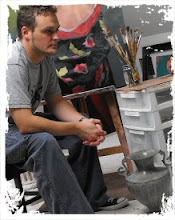The letter below was forwarded to me by my former high school art teacher Kay Polito who is a talented naturalist painter. Her work focuses primarily on nature and animals. It stresses the importance of developing a series or body of work that focuses upon a specific goal. The lesson learned is invaluable.
Billy Seccombe
www.billyseccombe.om
https://twitter.com/wseccombe
May 16, 2006
Dear Kay,
Monty Python alumnus Terry Gilliam was recently bemoaning the
current sad state of British film comedy: "The worst thing that
can happen to anyone in the movie business," he says, "is
success. It takes away the desire to strive. At the same time
it makes one prone to repetition--which is the death of
creativity."
In my modest practice as art mentor (I do it for free), I
frequently get letters that say, "Please take a look at my work
and tell me in which direction I should go--and, by the way,
how do I get into galleries?" I often find myself replying,
"You need more consistency. Your work is all over the place.
You need to develop one style or another and go in that
direction." In other words, I'm advising, "Repeat yourself."
In the painting game, repetition is one of the disciplines
needed for self-realization. Variations on a theme, however
subtle, lead to development and refinement. I'm a believer in
the concept of "set." Making a set or series of any subject or
idea is the way to further invent and codify style. The
unification of set can be managed by subject matter--for
example, all you ever wanted to know about peonies, or pumas,
or Pontiacs. As well, format, size, medium, colour and time
development are just a few of the other set-makers that invite
creative repetition. The benefit of set is to draw an artist
along on a purposeful voyage of discovery. Often, when I look
at an artist's collection of works, particularly in early
career, it reminds me of a flotilla of unique rental boats tied
up at a pier. Any one of these boats could be rowed off in any
number of felicitous directions.
Fine art is not like the movie business, where huge amounts of
capital and a variety of skills are needed to keep pace with
accepted norms and financial risk. Fine art is generally a low
investment, individualist industry, where private sweat pays
dividends to a self-directed, exploring soul. This takes place
with a combination of courage, stick-to-it-ive-ness and
character. Not everyone can pull it off. These days there are a
lot of distractions. There may also be too much information out
there. The current rage for diversity and the perceived need
for exploring new materials have spread the virus of
dilettantism. Jack of all trades--master of none.
Best regards,
Robert
Wednesday, April 1, 2009
Subscribe to:
Post Comments (Atom)





No comments:
Post a Comment
Post a comment below: